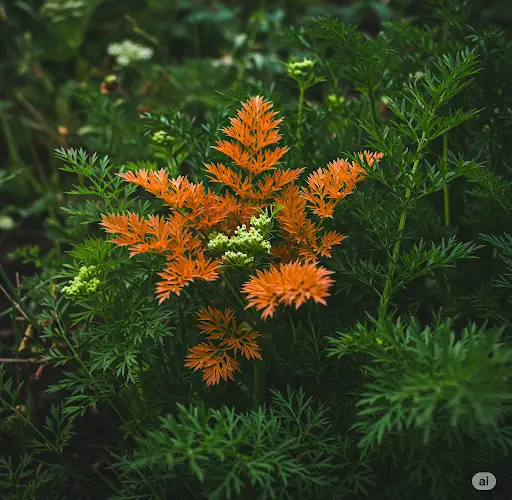Sowing carrot seeds can be a frustrating task for many home gardeners. The seeds are tiny, difficult to space evenly, and often end up overcrowded—leading to poor germination, tangled roots, and excessive thinning. However, there’s a simple solution that can transform this tedious process into a smooth and efficient task: a homemade carrot seed planter.
This clever device is easy to make using common household items, and it ensures even distribution of seeds, better spacing, and improved seed-to-soil contact. Whether you’re planting in garden beds, raised boxes, or containers, this tool simplifies the process and improves your chances of growing a healthy, uniform carrot crop.
Here’s how to make and use this time-saving tool for carrot sowing.
Why Carrot Seeds Are Challenging to Sow
Carrot seeds are extremely small and lightweight. When sown by hand:
-
Seeds often cluster together, leading to overcrowding
-
It’s hard to judge proper depth
-
Soil disturbance during thinning can damage nearby seedlings
To solve these problems, gardeners have tried mixing seeds with sand or using pelleted seed varieties, but these methods don’t always provide consistent results. A homemade sowing device, however, offers a controlled and repeatable way to plant with precision—without the need for fancy tools or expensive gadgets.
Materials You’ll Need
Creating this seed-sowing tool takes only a few minutes, and the materials are likely already in your home:
-
An empty plastic bottle (500 ml or 1 liter)
-
A small screw cap or nozzle (from a condiment bottle or dish soap)
-
A pin or needle
-
Some tape (optional for reinforcement)
The idea is to create a lightweight dispenser with a small outlet that allows carrot seeds to flow one at a time—or in controlled tiny amounts—while you guide them along your planting row.
How to Make the Carrot Sowing Device
-
Clean the Bottle: Wash and dry the plastic bottle thoroughly. A soft plastic bottle works best, as it’s easier to squeeze.
-
Modify the Cap: Take the bottle cap and use a pin or thin nail to poke a small hole in the center. The hole should be just wide enough to allow tiny seeds to pass through, but not so large that they pour out uncontrollably.
Alternatively, you can use the nozzle from an old ketchup or mustard bottle, which typically already has a narrow spout perfect for seed dispensing.
-
Reinforce If Needed: If the cap feels weak or loose, secure it with some tape to prevent it from falling off during use.
-
Fill with Seeds: Pour in your carrot seeds. Do not overfill—half full is ideal to allow shaking and squeezing.
How to Use the Sowing Device
Using the device is simple:
-
Prepare the Soil: Carrots prefer loose, well-drained soil. Work the soil to a depth of at least 20 cm and remove stones or clumps that could deform roots. Create shallow grooves (about 1 cm deep) where you’ll plant the seeds.
-
Dispense the Seeds: Gently shake or squeeze the bottle as you move along the planting row. The seeds will fall out in a more controlled, evenly spaced pattern than if you were sowing by hand.
-
Cover and Water: Lightly cover the seeds with fine soil and gently water the area. Keep the soil consistently moist during germination, which typically takes 10–14 days.
Benefits of Using the Homemade Device
This homemade carrot seeder offers several key benefits:
-
Improved spacing: Reduces the need for thinning, which can disturb nearby seedlings
-
Faster planting: Speeds up the sowing process, especially over long rows
-
Less waste: Minimizes seed loss from over-sowing or clumping
-
More uniform crop: Leads to even growth and easier harvesting
Gardeners using this device often report better germination rates, straighter carrot roots, and overall less hassle compared to traditional hand-sowing methods.
Bonus Tip: Use This for Other Tiny Seeds Too
While designed for carrots, this seed dispenser works great for other small seeds as well, including:
-
Lettuce
-
Radishes
-
Parsnips
-
Herbs like basil or dill
Just adjust the size of the hole depending on the seed size.
Final Thoughts
Sowing carrots no longer needs to be a tedious or messy chore. With this simple, homemade planting device, you can turn carrot planting into a fast, enjoyable task—one that delivers consistent results and a more satisfying harvest.
Whether you’re a beginner or an experienced gardener, this tool is a great addition to your gardening routine. It’s proof that with a little creativity, even the most delicate gardening tasks can be made easy and fun.



